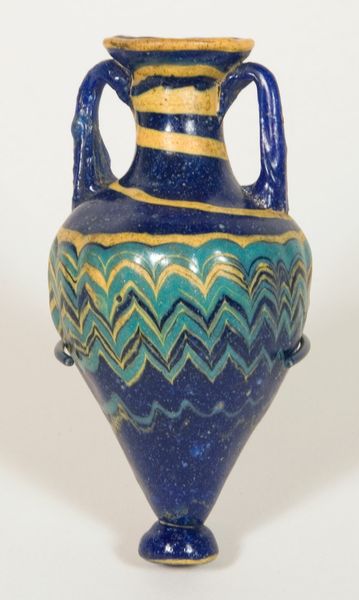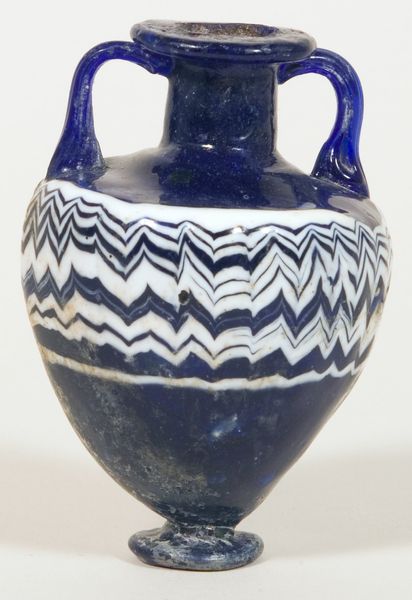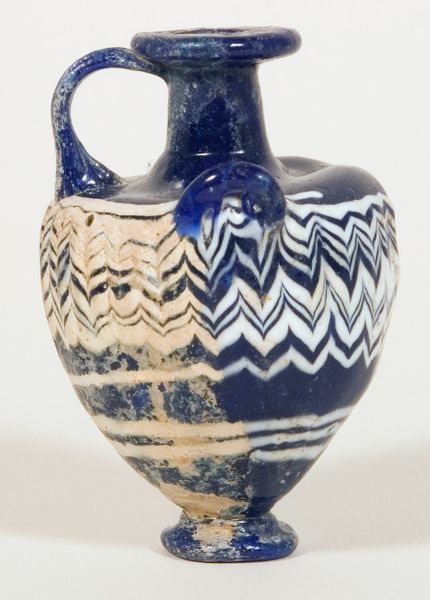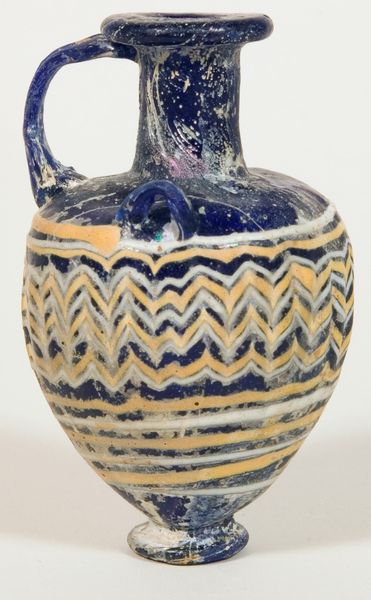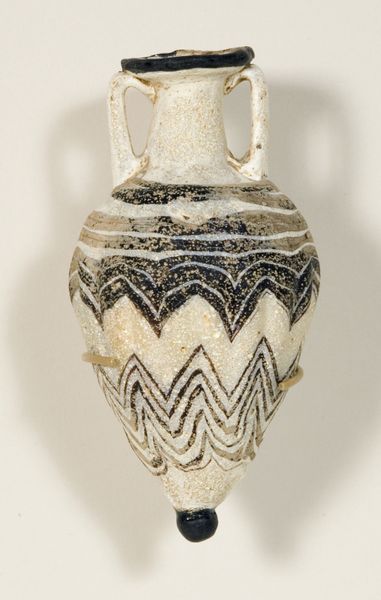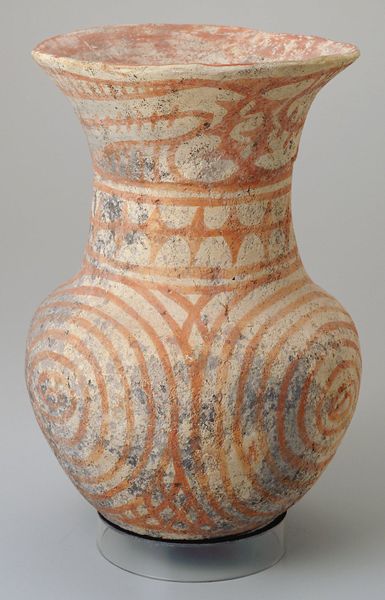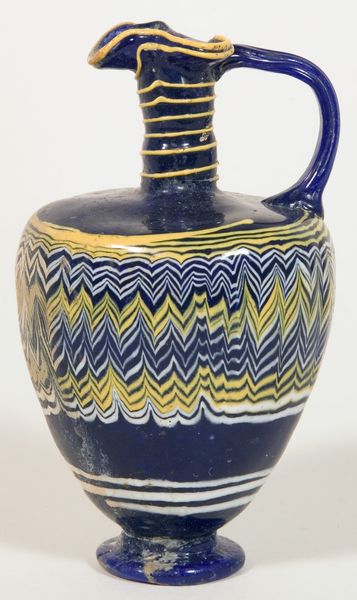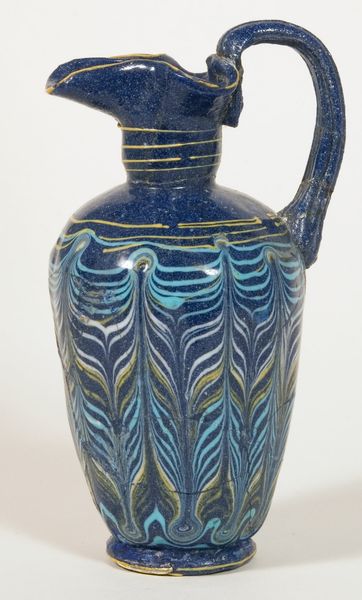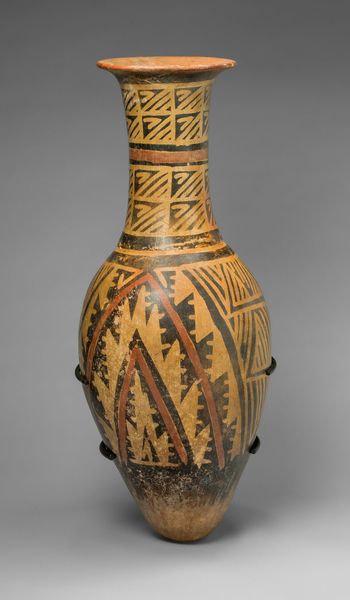
glass
#
glass
#
geometric
#
ancient-mediterranean
#
islamic-art
#
decorative-art
Dimensions: 10.5 × 5.4 × 4.3 cm (4 1/8 × 2 1/8 × 1 11/16 in.)
Copyright: Public Domain
Curator: What strikes me immediately is the vibrancy—even after centuries, those colors still pop. Editor: Absolutely. And considering that this piece, known as a "Bottle," dates from the early centuries of the Common Era, probably the 3rd century CE, it's remarkable to see such preservation. Its provenance is the Eastern Mediterranean. It's made of glass, showcasing intricate decorative designs. It's currently held here at the Art Institute of Chicago. Curator: The process of creating those intricate patterns in glass at that time must have been incredibly labor-intensive. You can see where the individual threads of glass were painstakingly laid down and fused. What kind of tools were required? And what about the social value placed on objects of such high craftsmanship, the economy, who produced them? Editor: Well, consider its probable cultural context. While categorized as ancient Islamic art here, its production likely preceded the major expansion of Islam. This piece probably reflects a convergence of Hellenistic, Roman, and pre-Islamic Middle Eastern aesthetics. This was an era of immense cultural exchange along trade routes and empires. The zigzags and lines that embellish it tell not just of technical skill, but intercultural exchange, gendered craft roles within production systems, and who it was ultimately made for. Curator: Indeed. And thinking about what it might have contained... perfumed oils, medicines, something else of high value to justify the skill put into its making. Who had access to that craftsmanship, or perhaps owned something so rare? Editor: That’s precisely where understanding materiality intertwines with questions of class, gender, and accessibility. Was this for everyday use? Religious purposes? Or did its owner accumulate more power, owning what could not easily be replaced. Curator: I suppose my focus is on the physical artistry involved, whereas yours leans into cultural meanings and its purpose through time. I think both of us agree though—what remains is a potent emblem of how skill and purpose can echo for over a thousand years. Editor: Absolutely. Let's think of the many stories these kinds of containers must contain and the work needed to decode each narrative of use. It shows us about a deep human history across eras and territories.
Comments
No comments
Be the first to comment and join the conversation on the ultimate creative platform.

